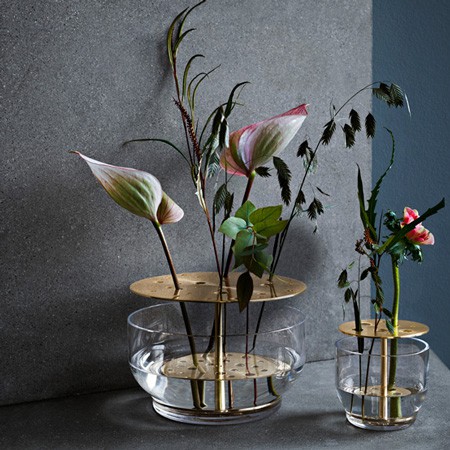Ikebana (生け花, 活け花, make flowers alive) is the Japanese art of flower arrangement It is also known as Kadō (華道, “way of flowers”). The tradition dates back to the 7th century when floral offerings were made at altars. Later, they were placed in the tokonoma (alcove) of a home. Ikebana reached its first zenith in the 16th century under the influence of Buddhist tea masters and has grown over the centuries, with over 1,000 different schools in Japan and abroad.
Kadō is counted as one of the three classical Japanese arts of refinement, along with kōdō for incense appreciation and chadō for tea and the tea ceremony.(source: wikipedia)














The Ikebana Principles:
Less is more: Where western-style arrangements go for flowers in a vase on mass to make an impact, ikebana goes for structure, space, and minimalism.
Asymmetrical balance: It’s common to see tall branches balanced precariously in ikebana. That’s because it uses a 30/70 balance ratio, rather than the normal 50/50.
In and Yo: Japanese Yin and Yang is about opposites completing one another.
Ephemerality: Ikebana aims to capture the fleeting beauty of things. A lot of ikebana arrangements feature a bud to represent the promise of hope.
Space: Not just emptiness, but an important part of the design as a whole.
More than decoration: The art of creating an arrangement leads to self awareness (and happiness!).

Stunningly beautiful. 🙂
LikeLiked by 1 person
Thank you for your warmest comment. I appreciate it.
LikeLiked by 3 people
Something new to know🙂 very pretty flowers
LikeLiked by 1 person
Ikebana truly is ‘Life lessons from way of flowers’.
It will be an amazing experience if you give it a try one day!
LikeLiked by 4 people
wow…
i really love it
I’m an otaku and truly fan of Japanese art
LikeLiked by 2 people
Lovely!
Do you read Manga?
LikeLiked by 2 people
Great
LikeLiked by 1 person
Thank you!
LikeLiked by 1 person
Japanese concepts are so wonderful and fascinating!
LikeLiked by 1 person
Agreed! So much to learn and explore!
LikeLiked by 1 person